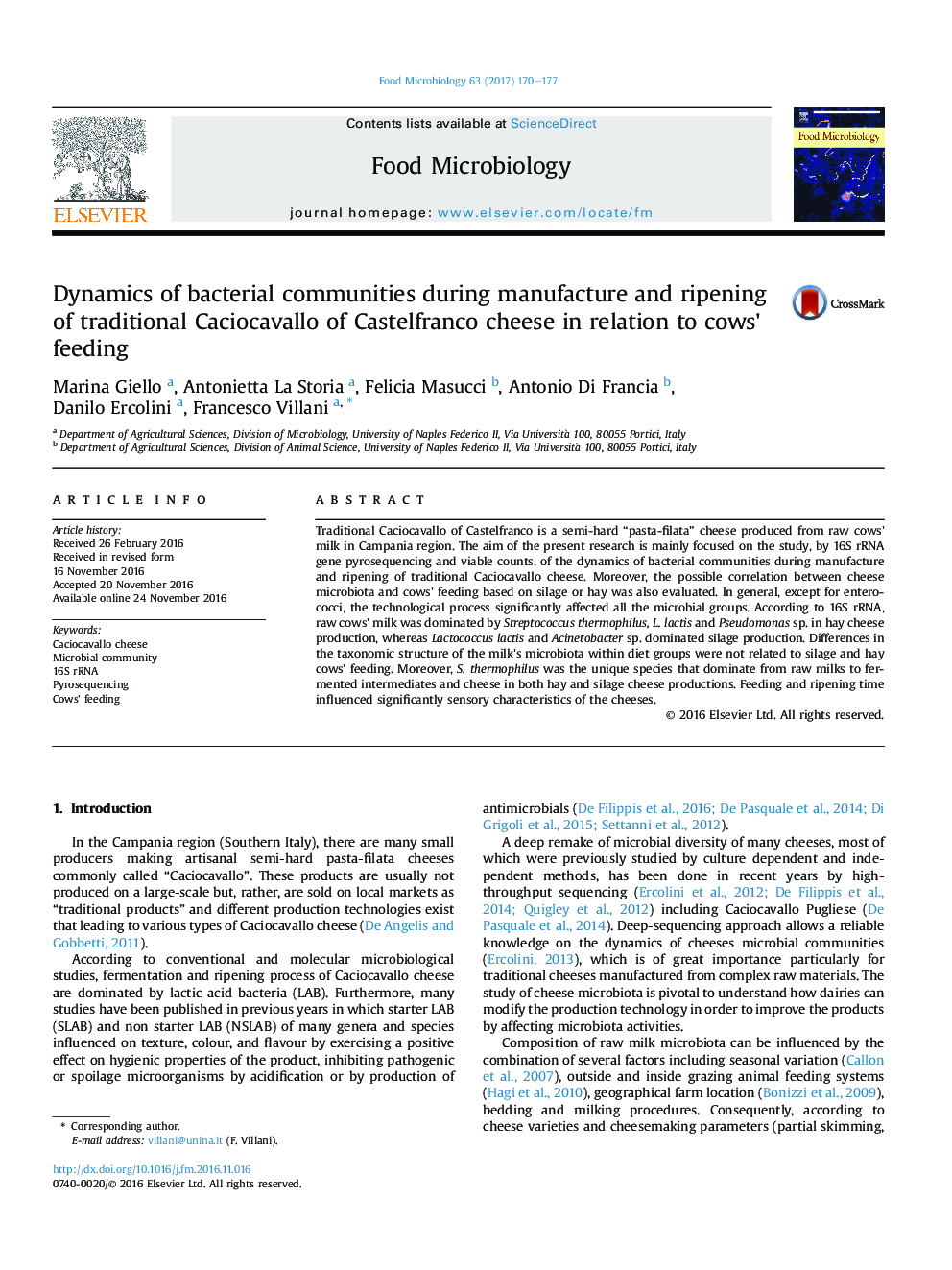| Article ID | Journal | Published Year | Pages | File Type |
|---|---|---|---|---|
| 5740185 | Food Microbiology | 2017 | 8 Pages |
â¢Raw milk of cows fed with silage or hay was used for Caciocavallo cheeses manufacture.â¢rRNA high-throughput sequencing revealed in-depth the microbiota of Caciocavallo.â¢Streptococcus thermophilus was the dominant species in both silage and hay cheeses.â¢Differences in the microbiota of milk within diet groups were not related to cows' feeding.â¢Feeding and ripening time influenced cheese attributes.
Traditional Caciocavallo of Castelfranco is a semi-hard “pasta-filata” cheese produced from raw cows' milk in Campania region. The aim of the present research is mainly focused on the study, by 16S rRNA gene pyrosequencing and viable counts, of the dynamics of bacterial communities during manufacture and ripening of traditional Caciocavallo cheese. Moreover, the possible correlation between cheese microbiota and cows' feeding based on silage or hay was also evaluated. In general, except for enterococci, the technological process significantly affected all the microbial groups. According to 16S rRNA, raw cows' milk was dominated by Streptococcus thermophilus, L. lactis and Pseudomonas sp. in hay cheese production, whereas Lactococcus lactis and Acinetobacter sp. dominated silage production. Differences in the taxonomic structure of the milk's microbiota within diet groups were not related to silage and hay cows' feeding. Moreover, S. thermophilus was the unique species that dominate from raw milks to fermented intermediates and cheese in both hay and silage cheese productions. Feeding and ripening time influenced significantly sensory characteristics of the cheeses.
